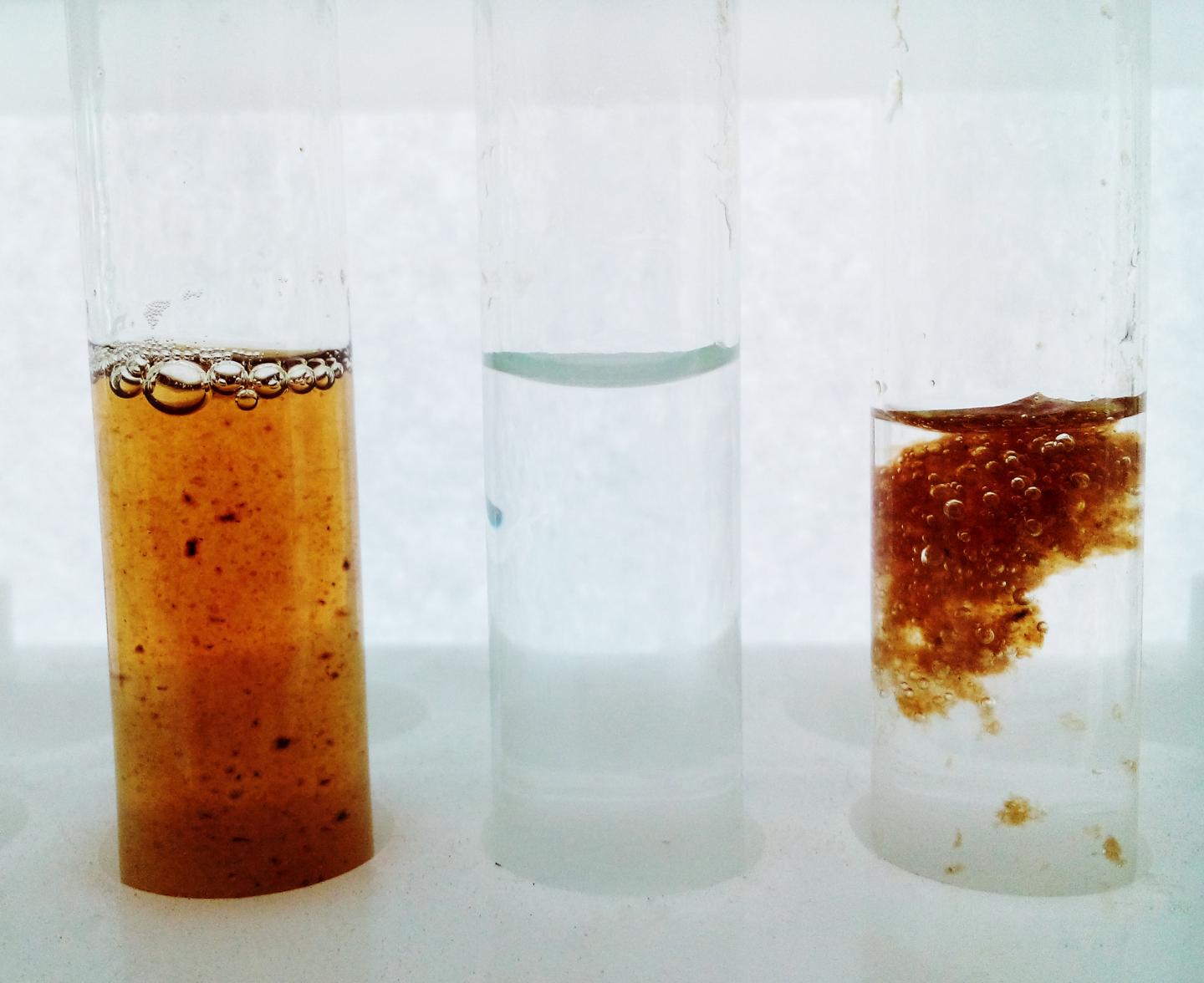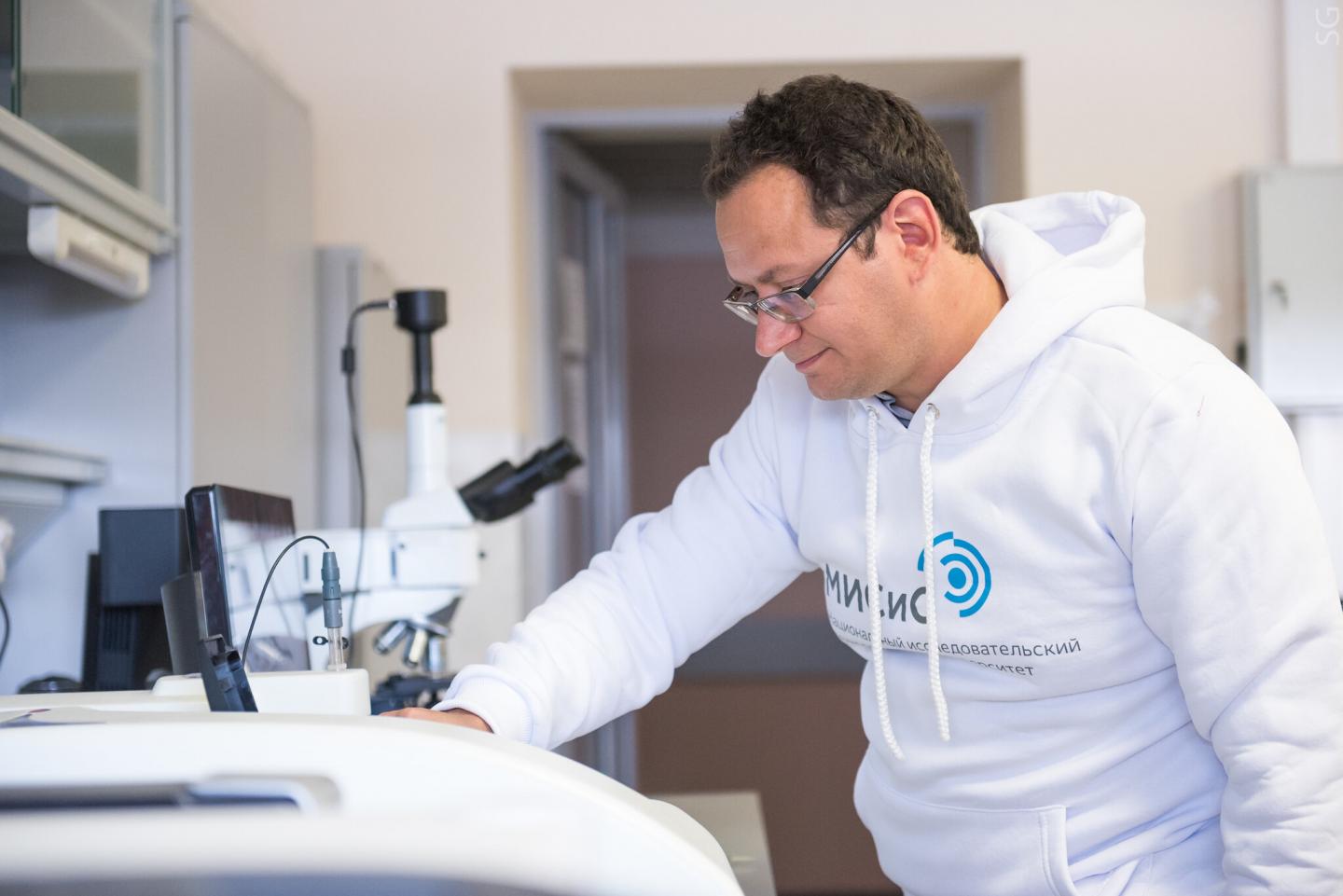
1) Graphene oxide, added in water 2) Water after purification with graphene oxide 3) Graphene oxide ‘flakes’ with bacteria before extraction. Credit: NUST MISIS
Researchers have found a way of using graphene to purify water and make it drinkable, without the need for further chlorination.
An impressive property of graphene is that it can destroy bacterial cells without the need of antibiotic drugs. Biomedical applications for graphene and graphene oxide has attracted an immense amount of interest from academics.
The research was conducted by scientists from the National University of Science and Technology “MISIS”and colleagues from Derzhavin Tambov State University and Saratov Chernyshevsky State University, was recently published in the journal Materials Science & Engineering C (citation below).
The study involved injecting graphene oxide into solutions (nutrient medium and the saline) containing E.coli.
Graphene oxide formed flakes with the living and the destroyed bacteria inside the solutions, resulting in a mass that’s easy to extract and make water completely free of bacteria. In addition, treating the extracted mass with an ultrasound separates the graphene – making it reusable.
The researchers found that graphene oxide at concentrations between 0.0025 and 2.5 g/l in growth medium “inhibits growth of bacterial colonies”. In physiological saline solution “this effect decreases dramatically to the point of complete disappearance.”

Aleksandr Gusev, one of the authors, Associate Professor of NUST MISIS Department of Functional Nanosystems and High-Temperature Materials.
Aleksandr Gusev commented:
“As working solutions, we chose a nutrient medium for the cultivation of bacteria (it is to the natural habitat of bacteria), as well as ordinary saline, which is used for injections. As a tested bacterial culture, E. coli modified with a luminescent agent was used to facilitate visualization of the experiments, was used.”
According to an MISIS news release on the research, “While it is not yet known exactly how the further destruction of bacteria occurs, researchers believe that graphene oxide provokes the formation of free radicals that are harmful to bacteria.”
Citation
Alexander Gusev, Olga Zakharova, Inna Vasyukova, Dmitry S. Muratov, Iaroslav Rybkin, Daniil Bratashov, Aleš Lapanje, Igor Il’inikh, Evgeny Kolesnikov, Denis Kuznetsov,
“Effect of GO on bacterial cells: Role of the medium type and electrostatic interactions”,
Materials Science and Engineering: C, Volume 99, 2019, Pages 275-281, ISSN 0928-4931, https://doi.org/10.1016/j.msec.2019.01.093.(http://www.sciencedirect.com/science/article/pii/S0928493117347410)
